Shallow raceway systems offer many advantages
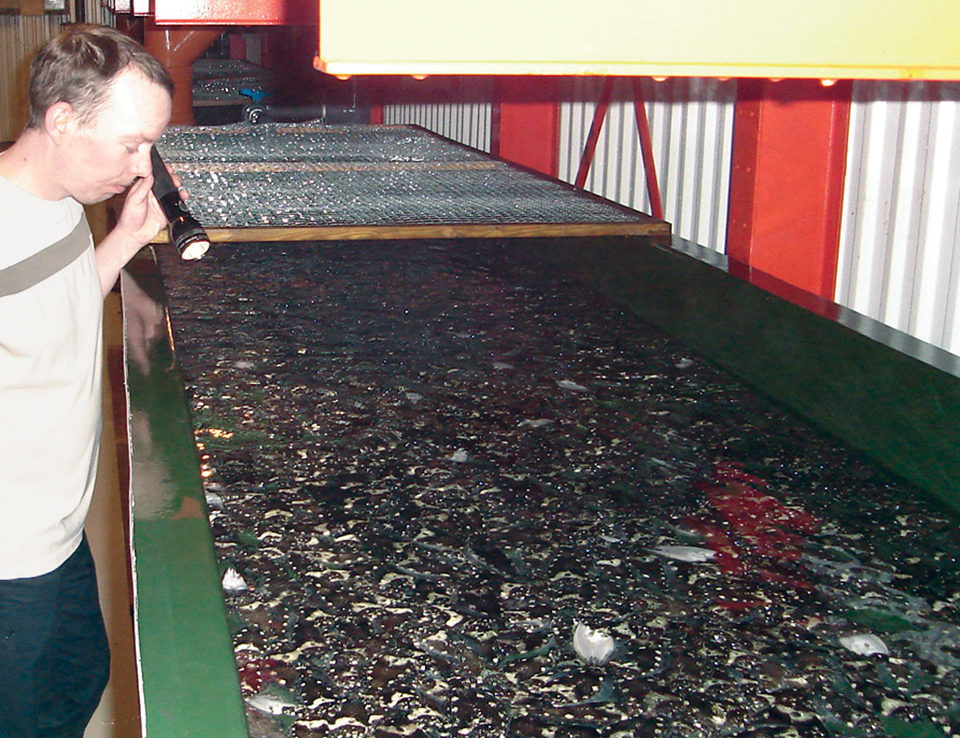
Currently, most land-based seafood production requires significant land areas. One alternative to reduce this area is to use production technologies that require less area, such as shallow raceway systems. The small footprint and compactness of this hyperintensive aquafarming technology is well-suited for use in industrial aquaculture parks, which typically yield five to 10 times higher production per surface area than conventional farming technology.
Industrial parks are generally developed to make industrial activities like manufacturing more efficient and physically separate them from other activities. These parks are often characterized by a cluster structure that provides advantages from being colocated with other closely related activities. Industrial aquaculture parks are a promising alternative for further expansion of the fast-growing, land-based production of seafood in many coastal and inland regions.
Project raceways
Europe has taken the lead in the implementation of this hyperintensive farming technology with Project Raceways. Its objective is to develop protocols for the production of up to seven highly valuable species of marine fish, including Atlantic halibut, spotted wolffish, turbot, Dover sole, and sea bream, and work is well under way at various companies and research institutions. Concurrent with the start of this five-nation consortium project is growing commercial activity involving some of the species above.
Varied consortium activities
Atlantic halibut, the biggest flatfish species in the oceans, is being grown by the Icelandic partner Fiskey, the main supplier of halibut juveniles in Europe. Fiskey starts out with 100-mg fish in raceway systems with 1 cm of water depth. Another partner, the Norwegian company Tustna Kveite, is working on growing out halibut from 10 grams to a commercial size of 15 kg, in 40-meter-long raceways with 30-cm water depth.
The spotted wolffish is another interesting species. It shows no escape reaction to the farmer, and when hungry homes in on the farmer for feed. The Icelandic company Hlyri is studying this arctic species in shallow raceways with very promising results. Akvaplan-niva is the research partner for both the halibut and spotted wolffish work.
In Portugal, warmwater fish species are the focus of research. For example, juvenile turbot are produced at Aquacría Piscícolas and then grown out at A Coelho E Castro. The latter will also study Senegal sole. Another partner company located further south, TiMar, is working with sea bream juveniles. Activities at these three facilities, supervised by the Spanish office of Akvaplan-niva, are expected to provide significant developments for the culture of these species.
Llyn Aquaculture in Wales is working on the early life stages of the warmwater species Dover sole and turbot. The University of Portsmouth’s Centre for Economic Studies is involved with all economic aspects of this raceway technology. Research to optimize the use of recirculation systems and a better understanding of the water dynamics of raceways is being conducted by teams at the Centro Interdisciplinar de Investigação Marinha e Ambiental at the University of Oporto in Portugal and Universidad Politécnica de Catalunya in Spain.
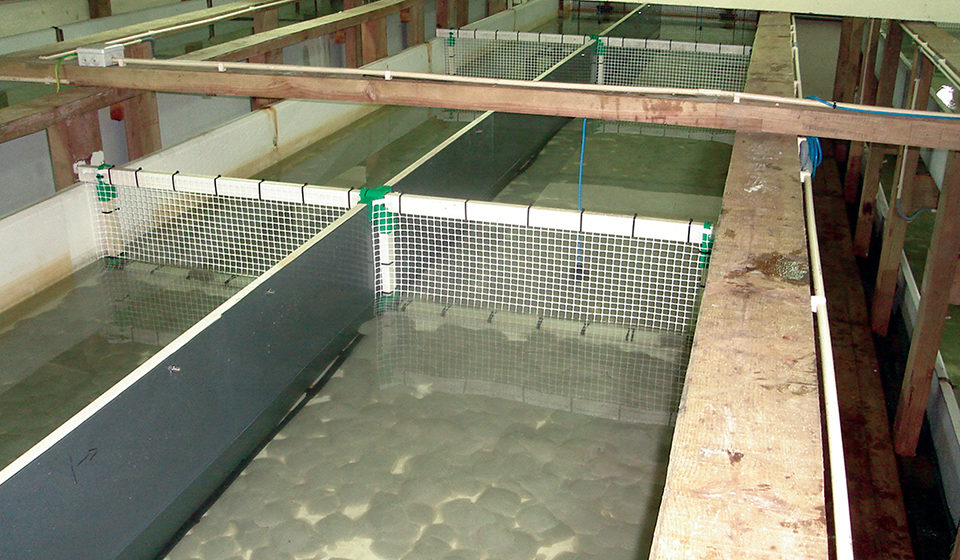
Hyperintensive technology
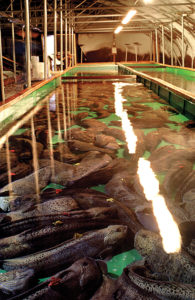
Aquaculture industry development from small units to industrial parks is possible and advantageous, because it could make even high-cost countries into competitive producers of valuable seafood species through the use of compact land-based facilities. Resource-saving approaches can support low-cost production based on advanced technology in combination with production methods that comply with product traceability, animal welfare rules, environmental regulations, and other criteria for sustainability. It is significantly easier to meet these demands within the frame of a cluster structure in an industrial park, with coordination of main operations and services, than at single, dispersed production units.
For example, a land-based operation for the production of 10,000 metric tons (MT) of a niche species would demand about 300,000 square meters of industrial buildings when conventional technology is used. This represents a huge economic challenge. With hyperintensive technology, the goal is to reduce the industrial building size 80 percent, or to produce the same volume within a 60,000-square-meter building. This requires a production increase from 30 to more than 150 kilograms per square meter of building surface, with an output value of more than U.S. $1,357 per square meter of building with the hyperintensive technology, compared to less than $340 per square meter with conventional technology.
The hyperintensive concept is also expected to reduce the use of other input elements, such as feed, water, oxygen, energy, and manpower. Another important aspect is labor productivity. With conventional technology, output per employee has been 20 to 50 MT per year for a species like turbot. With shallow raceway systems, the goal is to increase production to 50 to 200 MT per year per employee, depending on the overall size of the farm. This higher productivity is needed to obtain stable and high profit margins for investors. As the raceway systems are designed to facilitate automation, it is easier to achieve ambitious improvements in productivity with this technology than other alternatives.
Possible synergistic effects include hyperintensive fish production coupled with the use of industrial cooling waters, which would open for employment in regions where this resource is available. With chemistry adjustments, it should also be possible to install industrial parks close to important markets, opening up the farming of marine species in almost freshwater conditions.
Planned parks
In Galicia in northwestern Spain, the regional government has launched a plan for 23 separate industrial aquaculture parks covering 320 ha, with a planned annual fish production of 22,5000 MT. This could represent a paradigm for European aquaculture and have a cascading effect in the industry.
The parks are starting with conventional aquatechnology, but could eventually transition to hyperintensive technology. The forecasted impact of the technology transition could be very significant, reducing the production area to only about 32 ha of hyperintensive technology.
Advantages of shallow raceway systems
- Minimal land requirement. Depending on the number of production layers, shallow raceways may require only about 20 percent of the area for the same biomass production as with conventional systems. They can be built on inexpensive land some distance from the coast.
- Water conservation. Shallow raceway systems are easy to connect to water sources and support water reuse or recirculation. In a flow-through system with reuse, shallow raceways require only about 30 percent of the water used with conventional technology for equivalent biomass.
- High-density production. The use of floating pellets and movable screens in raceway systems supports high fish density and 30 percent higher standing biomass for the same tank surface.
- Species flexibility. Shallow raceways can be used for both pelagic and benthic-pelagic fish species.
- Feed efficiency. The use of floating pellets in raceways can reduce feed-conversion ratios up to 10 percent.
- Operational efficiency. Raceway systems can be installed as modules called “towers” to keep pace with increases in biomass and reduce start-up costs.
- Reduced labor requirement. Shallow raceways require only 50 to 75 percent of the staff needed to run conventional systems for the same production capacity.
(Editor’s Note: This article was originally published in the September/October 2007 print edition of the Global Aquaculture Advocate.)
Now that you've reached the end of the article ...
… please consider supporting GSA’s mission to advance responsible seafood practices through education, advocacy and third-party assurances. The Advocate aims to document the evolution of responsible seafood practices and share the expansive knowledge of our vast network of contributors.
By becoming a Global Seafood Alliance member, you’re ensuring that all of the pre-competitive work we do through member benefits, resources and events can continue. Individual membership costs just $50 a year.
Not a GSA member? Join us.
Authors
-
Victor Øiestad, Ph.D.
Akvaplan-niva, Spanish Office
Box 72, Es-36620
Vilanova de Arousa, Spain -
Atle Foss, Ph.D.
Akvaplan-niva, Bergen Office
Bergen, Norway -
Albert Imsland, Ph.D.
Akvaplan-niva, Icelandic Office
Kópavogi, Iceland
Tagged With
Related Posts
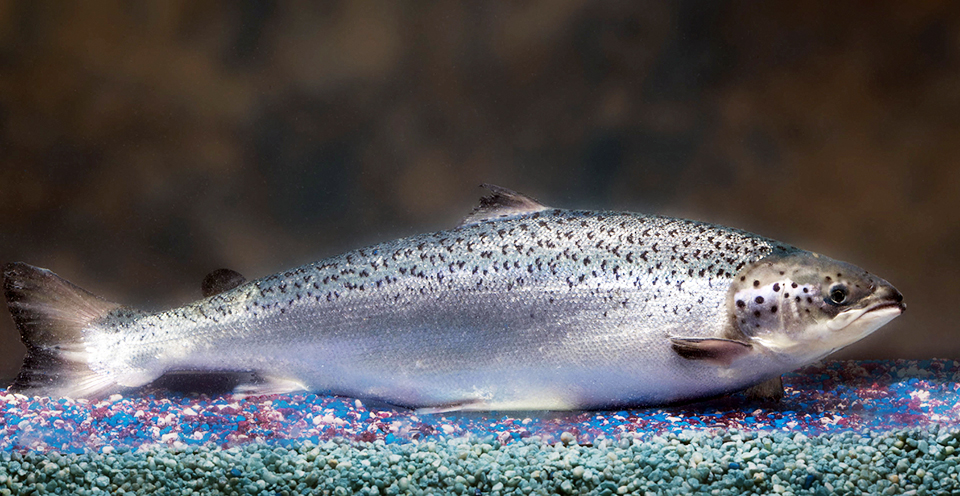
Intelligence
A brief look at genetically modified salmon
If approved by FDA, fast-growing genetically modified salmon will provide a safe and nutritious product similar to other farmed Atlantic salmon.
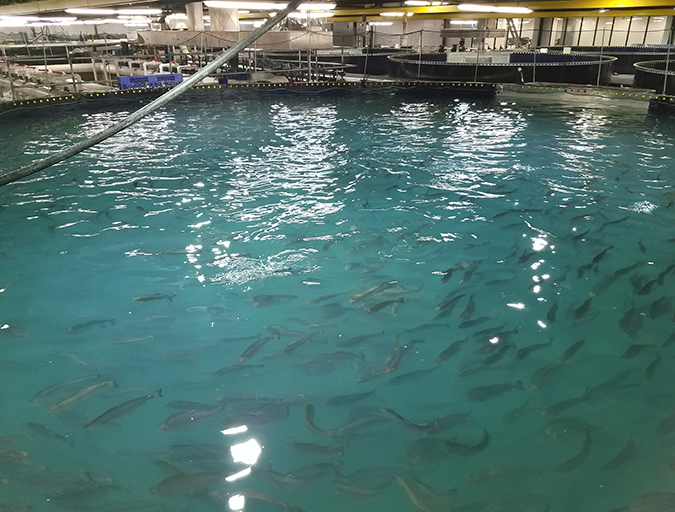
Intelligence
A land grab for salmon (and shrimp) in upstate New York
The operators of Hudson Valley Fish Farm see their inland locale as a pilot to prove that land-based fish farming, located in close proximity to major metropolitan markets, can be successful.

Responsibility
A look at integrated multi-trophic aquaculture
In integrated multi-trophic aquaculture, farmers combine the cultivation of fed species such as finfish or shrimp with extractive seaweeds, aquatic plants and shellfish and other invertebrates that recapture organic and inorganic particulate nutrients for their growth.
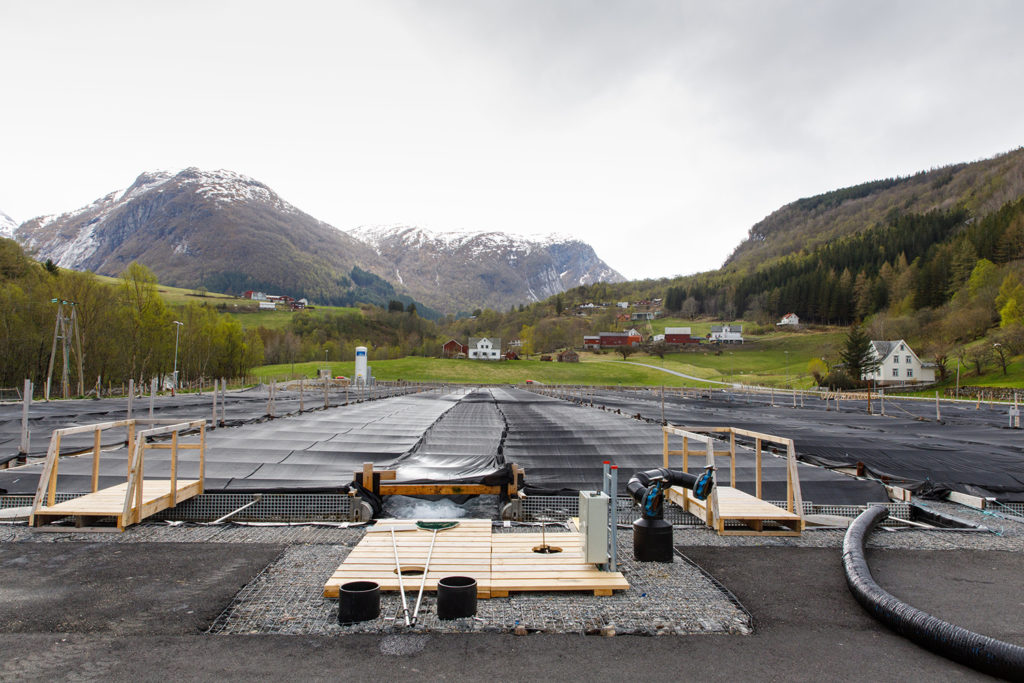
Innovation & Investment
Norway showcases halibut farm as sustainability star
Recognizing its potential as a sustainable fish producer, Norway highlights land-based halibut farmer Sogn Aqua in the debute of The Explorer digital showroom. The Advocate recently paid a visit to the farm in Ortnevik.


